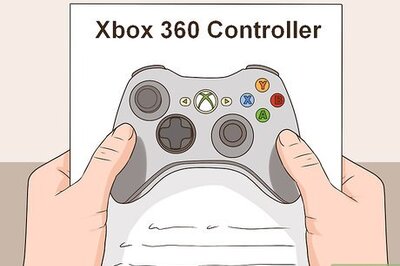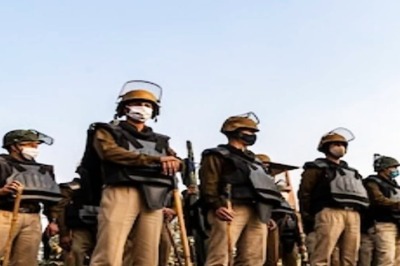
views
India has just placed its largest order for buying fighter jets, and it’s none other than the indigenous Tejas Light Combat Aircraft, or LCA. From a country that has bought Rafales, Sukhois and MiGs from foreign powers, to be able to rely on its own homebuilt aircraft is a big leap. But Indian manufacturers must not rest easy now, feels Kota Harinarayana, the father of the LCA project, as India is poised for greater heights.
It is time for Indian aircraft makers like HAL to look at exporting their home-built jets to other countries as well, now that their prowess is proven, he says in an interview with News18. Excerpts:
It must be a proud moment for you, with the defence services’ biggest order. Shows a lot more trust in India’s indigenous prowess.
I’m very happy because it’s a major order and the largest order HAL has so far had in its history. And it’s an order not on a licensed aircraft but an indigenously designed and developed aircraft.
So it’s an important thing. And a very important occasion not only for HAL and ADA, but for the country. It builds confidence. And this has been done despite the hundreds of problems we faced (in the development).
Some Tejas fighters are already inducted. How are they faring now? What’s the feedback?
I think the feedback has been pretty good. And the interaction between the IAF design team and the HAL team is extremely good, and there is an interface whereby any issue is thoroughly looked into and analysed and action is taken. We have brought in a system where all problems, major or minor, are analysed. The amount of flying the IAF has done is extraordinary. In a developmental environment, the number of flights may not be too many. But in the operational aircraft they are flying extensively.
The fact that they are flying extensively shows the aircraft is ready and available, and problems are not of a nature where the aircraft will be grounded.
Even the initial aircraft supplied with initial operational clearance software is now upgraded to final operational clearance software. With this clearance you can go to maximum limits and pilots can exploit the aircraft to the limit.
Tell us about the LCA successor projects. India is now developing the LCA Mk2 and the advanced medium combat aircraft.
The learnings from LCA have been extraordinary.
What happened with LCA Mk1? Well, we had to develop all technologies. All equipment. Everything we had to develop from scratch. Whereas for Mk2, the technologies are mature and a lot of equipment is available. Further we are doing incremental improvement and it’s a bigger aircraft. It can carry much more weapon load.
In Mk1 if we had 3.5 tonnes of weapon load, in Mk2 it’s doubled. Now we are looking at 6.5 tonnes. With this, you would be in a position to replace bigger aircraft like MiG-29, Mirage.
The important thing is, technologies are mature, systems and processes are mature.
And confidence levels—for the people designing, the people manufacturing, and the people who are going to operate— are very, very high.
Should the government then speed up funding for these projects?
I do believe we must accelerate the process of funding and strengthen the organisation. You must accept that more projects means more people are required.
Funding should be done without a loss of time. Once you do that, the problem of technology and the problem of infrastructure are no longer there. Now what you need is more people and more money. And you will be able to do a lot of things.
I think the time has come where India should be able to export instead of being an importer of fighter aircraft. That’s the way we should work and plan.
But the government is looking at an AMCA in six years. Is that realistic?
It can be done because most of the LCA technologies are already done. And we have completed most of the basic technology work and design work. Today, with all this background and infrastructure available, with funding and a little strengthening of manpower, we should be able to achieve this in six years.
Now that HAL is going to be outsourcing more of this to industry, will new aircraft development be faster?
When we started the LCA project itself, the involvement of industry and academia was very strong. Now, tier one partners have been taken in, companies like L&T, Dymanatics, they are now partners. As a result we will be able to scale up faster. Earlier it was capability development, now it is about capacity development.
And with tier 1 and tier 2 partners in board, capacity has increased..
I believe we can meet not only India requirements but should also be able to export. And there are many countries interested.
I’ve heard you speak of how you found knowledge and materials from even scrap dealers during the initial development days of the LCA. On a personal note, what has been your learning from the LCA project?
My biggest learning is, extraordinary talent is available in India in small and medium industries. And it is there that a lot of innovation is occurring. They also take bigger risks. I have always found smaller industries take bigger risks than bigger ones. People with one or two rooms (in their factories) do wonders. Switches, to bulbs, to cables. Many, many things. All of this is done by small and medium industry only. And they have not only sustained, they have even exported.
Now with a new emphasis on start- ups, technology growth will be faster. Besides, the Defence Research and Development Organisation also had a technology development scheme to support start-ups, where the big industries are not allowed to compete.
That’s the absolutely right thing.
That’s what NASA used to do. That’s what defence in the US was doing. And I’m happy today DRDO is doing it. They are already finding many industries and are competing.
They join hands with academia and then compete.
I’ve heard that 40 years back when you did your PhD., your thesis was ‘How to make India’s own fighter jet’. So, mission accomplished many times over?
(Laughs) My PhD was on design and development of a fighter jet for India by India. I never thought at the time that I would be asked to do the job.
But now it’s done. We have a good team and work is on. Because, Aatmanirbhar…whatever people are talking about now, we started long back and the results are seen now.
What are you working on next? I believe India’s first passenger aircraft is in the works?
Now I am a fellow at the National Aerospace Laboratories (NAL). My attention is now more on design and development of transport aircraft. Today NAL already has a two-seater. And they are making a next-generation trainer now. I hope we can fly in two months. Our desire is to next design a 90-seater regional transport aircraft, a Turboprop, where India has a big market..
India is the biggest market for turboprops. Existing turboprops are using three-decades-old technology. So this is a nice window, a nice sweet spot for India to get the lead. I hope we can get the right funding and we can do this. Then, what we earlier did in military aircraft, we will be able to do in civil. In aviation, military and civil must both grow, then only the country will prosper.
Read all the Latest News, Breaking News and Coronavirus News here




















Comments
0 comment